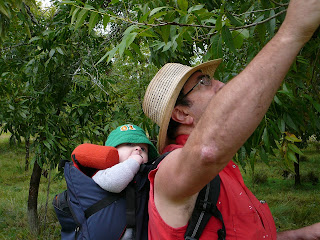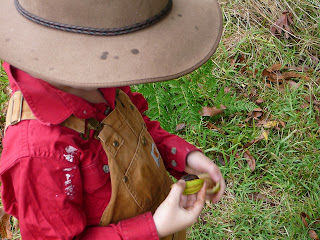 Autumn is a wonderful time at Geebung. Everything starts to move into reds and yellows. The pecans are picked and the trees go from froggy green to a strong yellow on their way to becoming the bare trees that we live with most of the winter.
Autumn is a wonderful time at Geebung. Everything starts to move into reds and yellows. The pecans are picked and the trees go from froggy green to a strong yellow on their way to becoming the bare trees that we live with most of the winter.The cattle start putting on thick winter coats and generally take a lot more interest in us as people who might have something tasty to supplement the tinning supply of pasture.
Last week was our Australian Certified Organic (ACO) audit, which we passed without too much trouble. The ACO audit process is pretty exhaustive but it gives me an hopefully you a lot of comfort to know they're making sure that "certified organic" means something.
The idea is that our product is traceable all the way from the farm through to processing, packaging and retail.
These audit trails give you a high level of assurance that the food we grow is produced without use of synthetic chemicals, GMOs and food additives and with a focus on soil health, animal welfare and best environmental practices, as required by the Australian Certified Organic Standard (available for free via http://www.bfa.com.au/ ).
Our picking efforts
I confess our picking efforts have been pretty modest this year. The cockatoos and demands on our time for other things have meant we haven't picked anywhere near the number of nuts we would like to.







